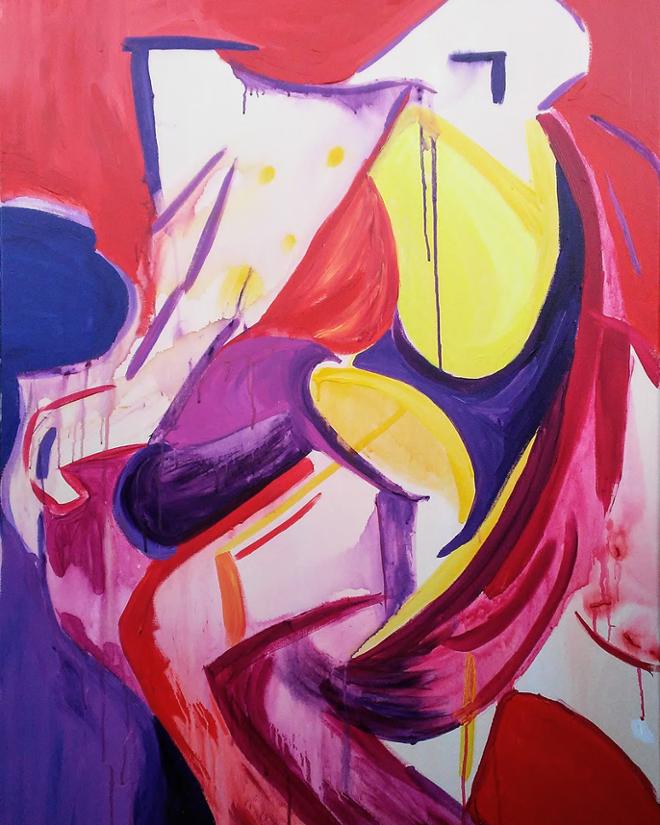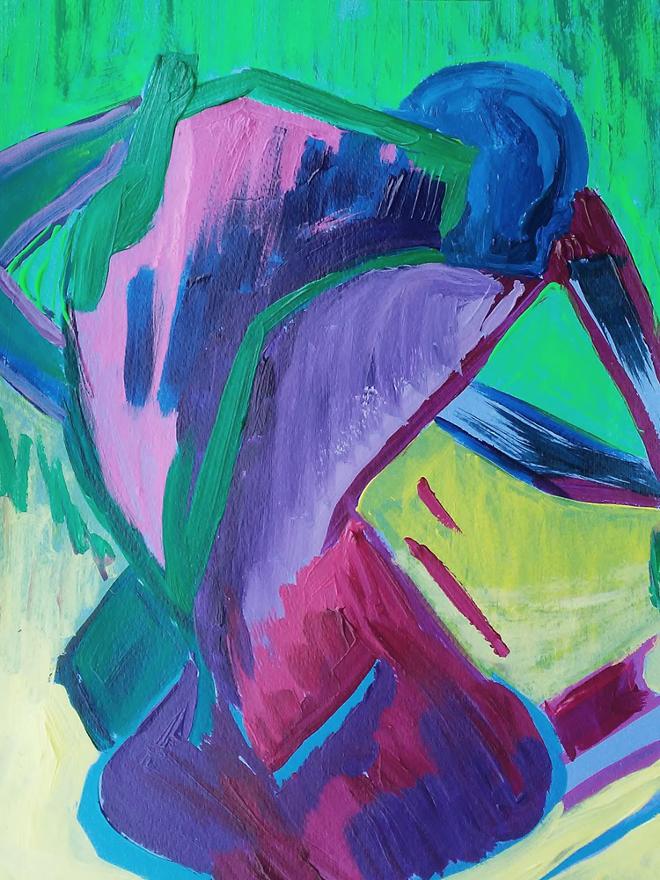Kyle Lang
Follow
Artist Statement
On many occasions, I have been told that painting is the loneliest form of creation. There may be some truth in that statement, I have found that painters are not as quick to collaboration as some of our peers who work in other mediums. That as it is, I have found myself in the stillness of the studio at many odd hours, trying to find the end to a painting that could otherwise continue for eternity, I have yet to find myself feeling lonely. Perhaps that's because I am always being stared at by the practiced figures that I have hung for inspiration, but I think it is more likely because of the act of painting.
In this series, I began with sketches, and they have become an integral part of my work, I always try to have a new set created before a painting. I have been curious, for a while about the relationship between drawing and painting, and what can materialize if you treat a painting like a drawing. Life drawing has a sense of urgency to it that is not always present in paintings, especially with oil paintings that are typically built up slowly over time, meticulously poured over until they reach a point of satisfaction. Spending time with a work, time getting to know it, and time editing is still vital in my practice. However, the initial creation is much more like the way I create a drawing; rapid and messy, unconcerned with perfection, only with information. I try to keep the urgency of the sketches, often painting more quickly than I normally would, and keeping that same pulse racing feeling I have when drawing the live models.
Working with live models means that a majority of my work has started with the female form, this tendency having more to do with the availability of models than a preference for a feminine figure. I am interested in the human form, how it moves, interacts, and rests, and due to these different patterns, my series has split into two sub-series. One focused on the human form itself and how it presents and feels, and the other more based on motion, how I'm feeling, and the action that shown. The form sub-series tends to be more stationary, slower, stiller, calm and quiet, less in your face, and just existing in a space where you could converse with the individual in the painting and see how they are feeling. The Feeling sub-series has more to do with my own feelings, they are more fast passed and jittery, as emotions flood through me and exit again, more reactionary, contrasting and sharp sometimes aggressive, or frustrated, but other times lively, and excited, but I am finding that the emotional states start to look more similar the longer I create, more intertwined with each other, and more confusing like I am, like people are. We come to an understanding and begin to converse through the canvas.
In a way, painting becomes more of a dialog than anything else once I have entered flow. Flow is the state of being fully immersed in a feeling, where everything but your work fades into the background, music that was playing is no longer heard and anything else besides the act is secondary. Once in this state, my full body becomes a part of the work, and I tend to move rapidly, as paint is thrown at the canvas to become bodily, and then move towards becoming something else entirely. Forms that were at some point recognizable as bodies become strange abstracted shapes, with bright colors, and hard unnatural lines. People become obscured, messy, and emotional.
As I have grown as an artist emotion has become more integral in my work, color choices, and brush strokes tend to change with how I am feeling. The first work Metamorphized came about because I was going through a depressive episode, the dulled down colors and sharpness reflect that and I felt that if I didn’t paint how I felt the feeling would consume me. Another work Gloaming that came later was the first of the series in a square format and came about because I needed a change of pace in the work. The emotion behind it is much the same as Metamorphized but takes a much softer approach with high saturation as I was trying to take my mind off of troubles and enjoy the process of creating. These works were major turning points, and as a whole summarize how I think about art and its relationship to emotional processing.
 Click to view An abstract painting consisting of sharp, gestural marks and bright colors. Full-Screen
Click to view An abstract painting consisting of sharp, gestural marks and bright colors. Full-Screen
Incertitude // 36” x 48” // Acrylic on canvas // 2020
 Click to view An abstract painting consisting of human figures sitting down in cool tones and pinks. Full-Screen
Click to view An abstract painting consisting of human figures sitting down in cool tones and pinks. Full-Screen
Together // 12” x 15” // Acrylic on paper // 2020
 Click to view A geometric abstract painting resembling a figure in cool tones. Full-Screen
Click to view A geometric abstract painting resembling a figure in cool tones. Full-Screen
Disconcerted // 12” x 15” // Acrylic on paper // 2020
 Click to view An abstract painting consisting of two figures in bright colors. Full-Screen
Click to view An abstract painting consisting of two figures in bright colors. Full-Screen
Apart // 24” x 15” // Acrylic on paper // 2020
 Click to view An abstract painting consisting of organic, gestural marks and cool tones. Full-Screen
Click to view An abstract painting consisting of organic, gestural marks and cool tones. Full-Screen
Underlay // 30” x 40” // Acrylic on paper // 2020
 Click to view An abstract painting with cool tones. Full-Screen
Click to view An abstract painting with cool tones. Full-Screen
Fog // 30” x 40” // Acrylic on paper // 2020
 Click to view An abstract painting consisting of geometric shapes resembling a figure and bright colors. Full-Screen
Click to view An abstract painting consisting of geometric shapes resembling a figure and bright colors. Full-Screen
Seething // 12” x 15” // Acrylic on paper // 2020
